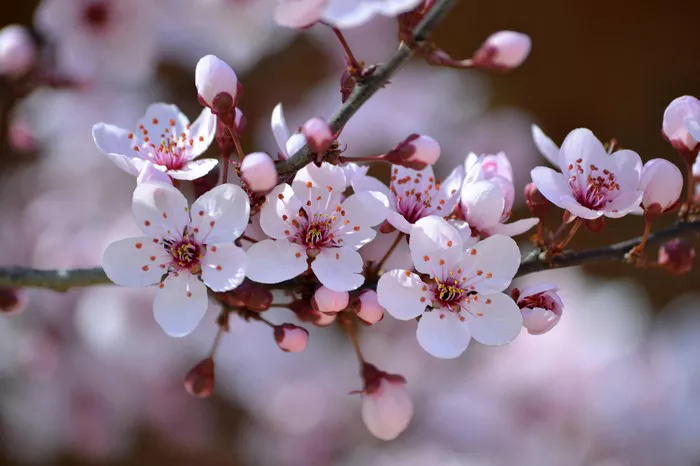Flowering cherry trees are a sight to behold, with their delicate blossoms and graceful branches adding beauty to any landscape. However, for dog owners, there may be concerns about whether these trees pose a risk to their furry companions. In this article, we’ll explore the potential dangers that flowering cherry trees can pose to dogs and provide guidance on how to keep your pets safe.
Understanding Flowering Cherry Trees
Flowering cherry trees, also known as cherry blossom trees, belong to the genus Prunus and are prized for their stunning display of blossoms in the springtime. These trees are commonly planted in gardens, parks, and along streets to enhance aesthetics and celebrate the arrival of spring. There are many different species and cultivars of flowering cherry trees, each with its own unique characteristics and bloom colors.
Toxic Components of Flowering Cherry Trees
While the blossoms of flowering cherry trees are a source of joy for many, they also contain compounds that can be harmful to dogs if ingested. The primary concern is cyanogenic glycosides, which are found in various parts of the cherry tree, including the leaves, stems, and seeds. When ingested, cyanogenic glycosides can release hydrogen cyanide, a potent toxin that interferes with cellular respiration and can be fatal in high enough doses.
Potential Risks to Dogs
Dogs are naturally curious creatures, and they may investigate plants in their environment by sniffing, licking, or even chewing on them. If a dog were to ingest parts of a flowering cherry tree containing cyanogenic glycosides, it could lead to poisoning. Symptoms of cyanide poisoning in dogs may include:
Difficulty breathing
Bright red gums
Dilated pupils
Hyperventilation
Seizures
Collapse
Death
The severity of symptoms depends on the amount of cyanogenic glycosides ingested and the size of the dog. Small breeds and puppies may be more susceptible to poisoning due to their lower body weight.
Preventing Poisoning in Dogs
As a responsible dog owner, there are several steps you can take to reduce the risk of poisoning from flowering cherry trees:
1. Fence off the area: If you have flowering cherry trees in your yard, consider fencing off the area to prevent your dog from accessing them. This will also help protect other plants and flowers that may be toxic to dogs.
2. Supervise outdoor time: When allowing your dog to roam freely in areas where flowering cherry trees are present, supervise their outdoor activities closely. Keep an eye on them to ensure they don’t chew on or ingest any potentially harmful plant material.
3. Train your dog: Teach your dog commands such as “leave it” or “drop it” to discourage them from investigating or consuming plants in the environment. Consistent training can help prevent accidental ingestion of toxic substances.
4. Provide alternative chew toys: Keep your dog entertained and satisfied by providing them with safe chew toys and treats. This can help redirect their chewing behavior away from plants and trees.
5. Consult with a veterinarian: If you suspect that your dog has ingested any part of a flowering cherry tree or is showing symptoms of poisoning, seek immediate veterinary care. Prompt treatment can improve the prognosis and prevent serious complications.
Safe Alternatives for Landscaping
If you’re concerned about the potential risks posed by flowering cherry trees but still want to enhance your landscape with beautiful blooms, there are several dog-friendly alternatives to consider:
1. Dogwood trees: Dogwood trees (Cornus spp.) produce lovely blossoms in the spring and are not known to be toxic to dogs.
2. Magnolia trees: Magnolia trees (Magnolia spp.) offer large, fragrant flowers and are generally considered safe for dogs.
3. Fruit trees: Consider planting fruit trees such as apple or pear trees, which produce edible fruits that are safe for dogs to consume in moderation.
4. Non-toxic plants: Research and select non-toxic plants and flowers to incorporate into your landscaping design. There are many beautiful options available that pose minimal risk to dogs.
By choosing dog-friendly plants and taking proactive measures to prevent exposure to toxic substances, you can create a safe and enjoyable outdoor environment for both you and your canine companion.
Conclusion
While flowering cherry trees are prized for their beauty, dog owners should be aware of the potential risks they pose to their pets. Cyanogenic glycosides found in cherry blossoms can be toxic to dogs if ingested, leading to symptoms ranging from difficulty breathing to seizures. To keep dogs safe, it’s essential to prevent access to flowering cherry trees and other potentially harmful plants, supervise outdoor activities, and seek veterinary care if poisoning is suspected. By choosing dog-friendly alternatives for landscaping and taking proactive measures, dog owners can create a safe and enjoyable outdoor environment for their furry friends.


